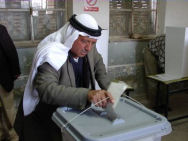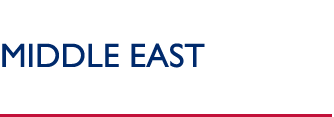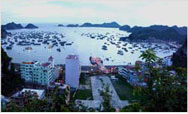 
Contacts
Administrator’s Special Assistant for the Middle East
George Laudato
Press Inquiries
U.S. Agency for International Development
Office of Press Relations
Ronald Reagan Building
Washington, D.C.
20523-0016
Tel: 202-712-4320
Fax: 202-216-3524
Public
Inquiries
USAID
Missions
Middle East
Overview
USAID operates seven country
programs and a regional program in the Middle East and North
Africa. Stretching from continental Asia to Africa,
this region has enormous potential for economic growth and development.
Challenges
A wide range of social and
economic challenges continue to affect the Middle East and North
Africa. Nearly half of the region’s population is under age 24. Inadequate
educational and employment opportunities for this large youth population contribute
to internal instability. Poor prospects for long-term health and prosperity
reinforce intolerance and extremism and provide fertile ground for unrest.
Weak democratic
institutions in many countries in the region fail to provide citizens with ways
to actively participate in the decision-making that affects their lives. In Iraq
and West Bank/Gaza, continued conflict poses serious obstacles to development.
USAID's Response
To address concerns about joblessness
among the rapidly growing populations of many Middle Eastern countries, USAID implements
programs that stimulate economic opportunities through trade facilitation, infrastructure
improvements and business development. USAID also works to expand the horizons
of Middle Eastern youth by making quality education available to more students.
USAID health programs help to raise living standards, particularly for
vulnerable groups such as women and children. Finally, USAID’s governance
programs aim to cultivate strong local, regional and national institutions that
will be able to provide reliable services to citizens. Each country program is
guided by a multi-year strategic plan that identifies the sectors in which
USAID will work and estimated levels of funding.
USAID's
work in the Middle East includes:
-
Rebuilding Iraq and supporting the transition
to stability and democracy;
- Helping Palestinians
realize a two-state solution with Israel—living side by side in
peace;
- Promoting democratic
reforms;
- Expanding education to give youth job skills
and roles in society; and
- Supporting free trade
agreements, infrastructure and business development.
The Middle East Bureau and field offices work in close partnership with U.S. and local non-governmental organizations, private businesses, universities,
international organizations, and the governments of host countries to achieve
long-lasting results. In Fiscal Year 2007, the Middle East Bureau is managing over $2.4 billion in U.S. assistance activities across the region.
USAID's Work in Iraq
The rebuilding of Iraq is the
largest reconstruction effort since the Marshall Plan. Since 2003, USAID
has been committed to improving the lives of Iraqis by encouraging economic
growth, supporting democracy, rehabilitating health and education systems,
providing humanitarian assistance to displaced and vulnerable populations and
restoring and upgrading infrastructure, such as sewage, electricity and access
to clean water.
USAID Success Stories in the Middle East
- Infrastructure: USAID’s programs in Egypt have contributed to
substantial improvements in the country’s infrastructure, including its water,
sewage, power, rail, telecommunications, grain storage and port systems.
- Democracy and Governance: USAID has supported the training of over 4,000 Iraqi civil servants in key areas of public administration, with the goal of reaching 20,000 by summer 2009.
- Economic Growth: With assistance from a USAID trade
capacity building program in 2006, Morocco introduced a new risk-based cargo
system, reducing the time to export by two days and import by four days.
- Education: USAID
provides a variety of in-country scholarships to disadvantaged students in Egypt and Lebanon
to attend the American University of Cairo, Lebanon American
University and the American University
of Beirut.
- Health: Over the
last year, USAID programs in the West Bank and Gaza have improved access to clean water and
sanitation for over 1.6 million Palestinians.
- Environment: In the Middle East and North Africa,
USAID’s work has contributed to an increase in the total environmentally
protected area, which has risen by 46 percent from 1990 to 2006.
- Public-Private
Partnerships: Between 2006
and 2008, USAID will have almost tripled the number of public-private
partnerships in the Middle East and North Africa
and more than tripled the resources it leverages through these partnerships. Partnerships
have included programs in the areas of youth leadership, water, health
communications and coffee exports.
Back to Top ^
|


